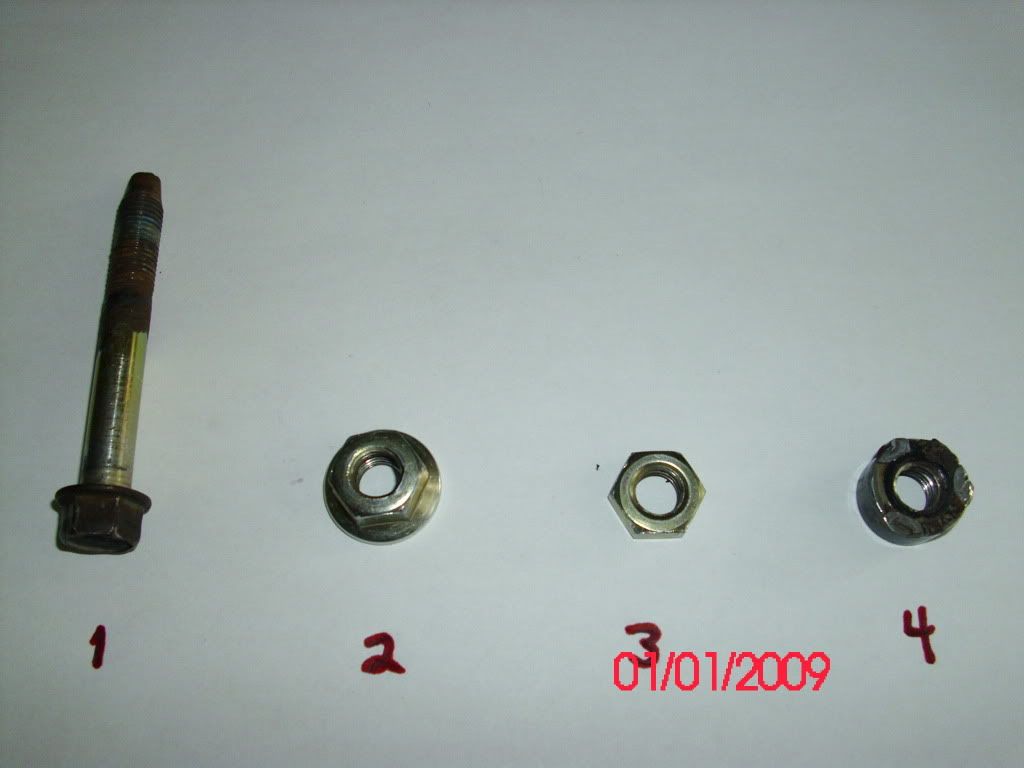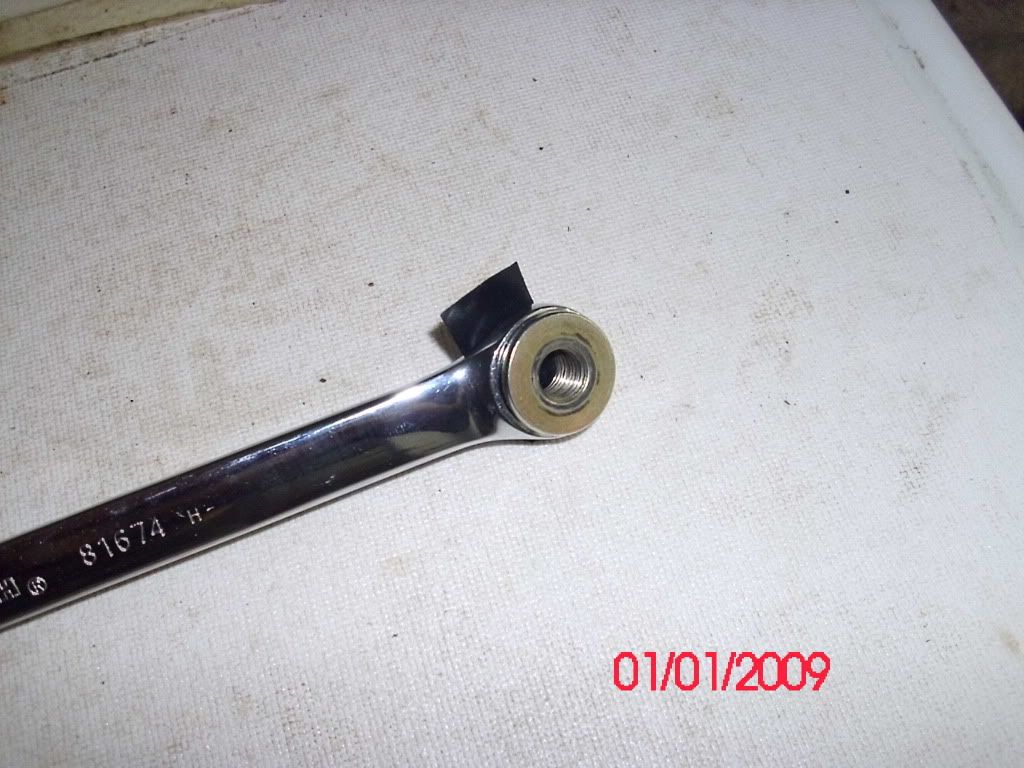There is a common problem Festy/Aspire people run into when installing new rear struts, namely getting out the lower bolt that holds the strut in. Out of six bolts, I have only ever gotten one out intact. Either the captured nut breaks off, or the bolt shaft is welded to the metal tube inside the strut mount by corrosion, or the bolt head gets rounded off; or a combination of these. Here is my solution to this mess.
When I was unbolting my driver's side rear strut, I almost got it completely off the captured nut when the nut itself broke off. It is only held to the axle beam by three tack welds, and breaking off is common. Luckily, I was able to get the nut out of the end of the axle beam by jamming a large flat screwdriver under it, and continuing to unscrew the bolt. I pulled the nut out with a telescoping magnetic probe.
But the bolt would not come out; I discovered this was because it was welded to the metal tube. So I had to hacksaw the bolt, as it turned out in three places to get it off. So now I had no bolt and no captured nut.
No problem.
Looking at stuff in the JY, I discovered that the lower control arm (LCA) inner bolt on Festys and Aspires is the same bolt as the rear lower strut bolt. (See pic 2) These are much easier to get out too, as they have far less exposure to corrosion. I am six for six in getting these off.
Then I noticed that there are two nuts that hold on the rear strut at the top, a "normal" nut used as a locknut and a flared nut under it. These have the same threads (10mm x 1.5) as the LCA bolt. So basically I used the LCA bolt and the flare nut in place of the pieces that broke, and it works fine.
To install the nut inside the axle beam, I used a 17mm box wrench and lightly taped the flare nut to it (pic 3); you can access the area from the rear of the axle beam. I used Loctite to hold the nut on and prevent water from getting to the threads. The bolt shaft got a good dose of Anti-Sieze so it can't freeze to the tube from corrosion in the future.
Oh yeah, before installation I cleaned up the threads on the bolt and nut with a die and tap.
Edit: This is a lot harder to do on Aspire axle beams, because the factory put in an additional metal "wall" inside the axle beam that prevents access from the rear of the beam.
Pic 1: LCA bolt, flare nut, "normal" nut, broken captured nut from inside the axle beam.



When I was unbolting my driver's side rear strut, I almost got it completely off the captured nut when the nut itself broke off. It is only held to the axle beam by three tack welds, and breaking off is common. Luckily, I was able to get the nut out of the end of the axle beam by jamming a large flat screwdriver under it, and continuing to unscrew the bolt. I pulled the nut out with a telescoping magnetic probe.
But the bolt would not come out; I discovered this was because it was welded to the metal tube. So I had to hacksaw the bolt, as it turned out in three places to get it off. So now I had no bolt and no captured nut.
No problem.
Looking at stuff in the JY, I discovered that the lower control arm (LCA) inner bolt on Festys and Aspires is the same bolt as the rear lower strut bolt. (See pic 2) These are much easier to get out too, as they have far less exposure to corrosion. I am six for six in getting these off.
Then I noticed that there are two nuts that hold on the rear strut at the top, a "normal" nut used as a locknut and a flared nut under it. These have the same threads (10mm x 1.5) as the LCA bolt. So basically I used the LCA bolt and the flare nut in place of the pieces that broke, and it works fine.
To install the nut inside the axle beam, I used a 17mm box wrench and lightly taped the flare nut to it (pic 3); you can access the area from the rear of the axle beam. I used Loctite to hold the nut on and prevent water from getting to the threads. The bolt shaft got a good dose of Anti-Sieze so it can't freeze to the tube from corrosion in the future.
Oh yeah, before installation I cleaned up the threads on the bolt and nut with a die and tap.
Edit: This is a lot harder to do on Aspire axle beams, because the factory put in an additional metal "wall" inside the axle beam that prevents access from the rear of the beam.
Pic 1: LCA bolt, flare nut, "normal" nut, broken captured nut from inside the axle beam.







Comment